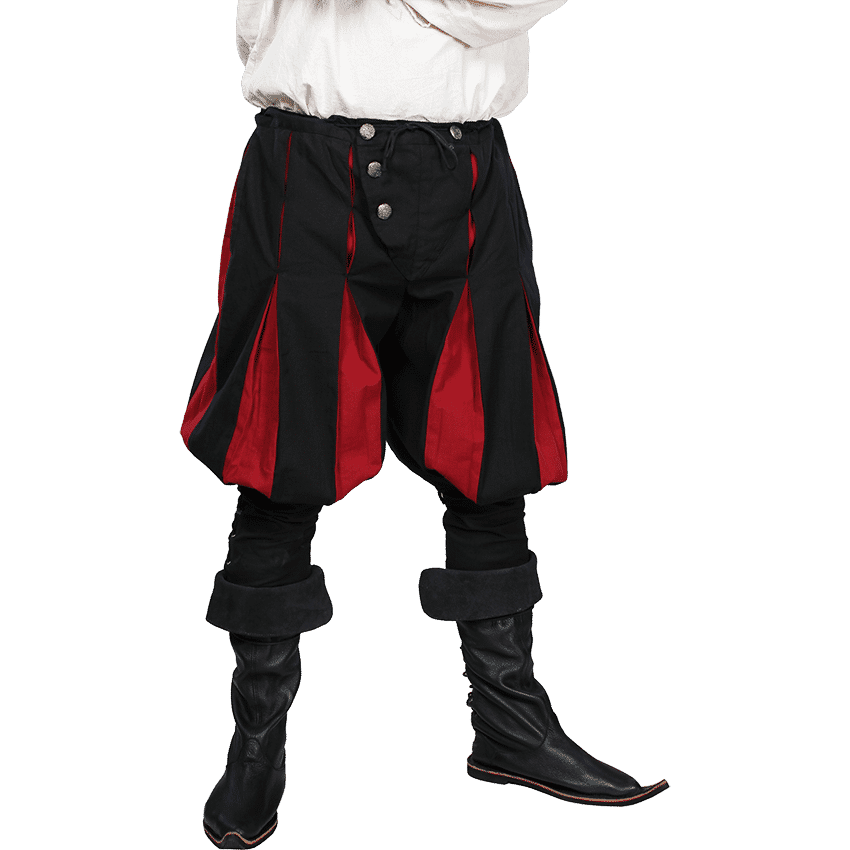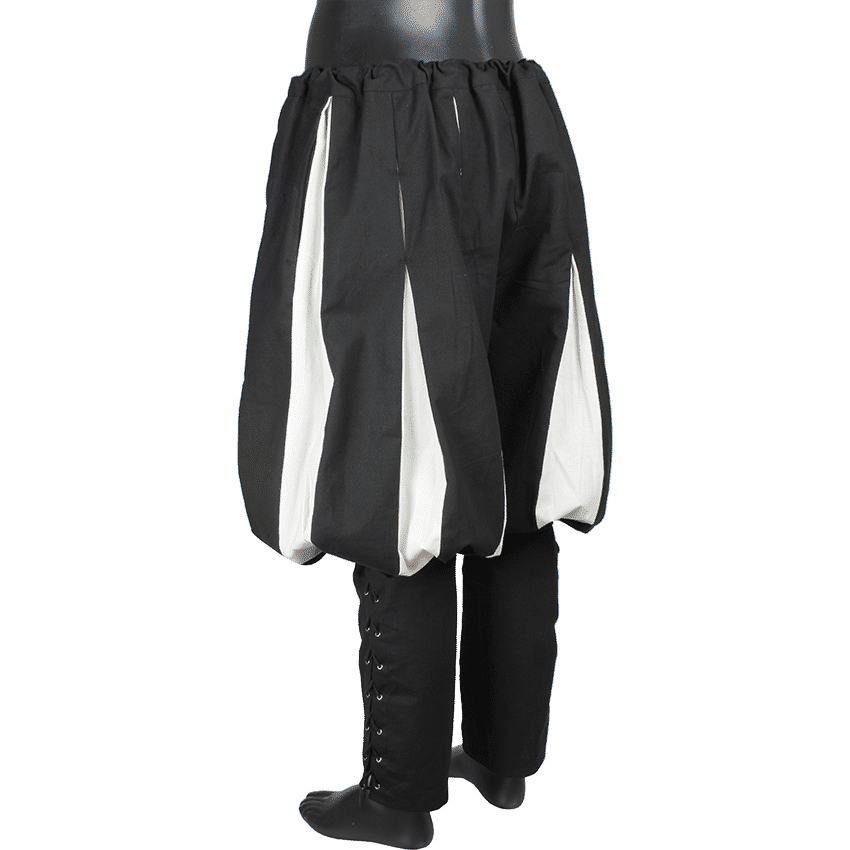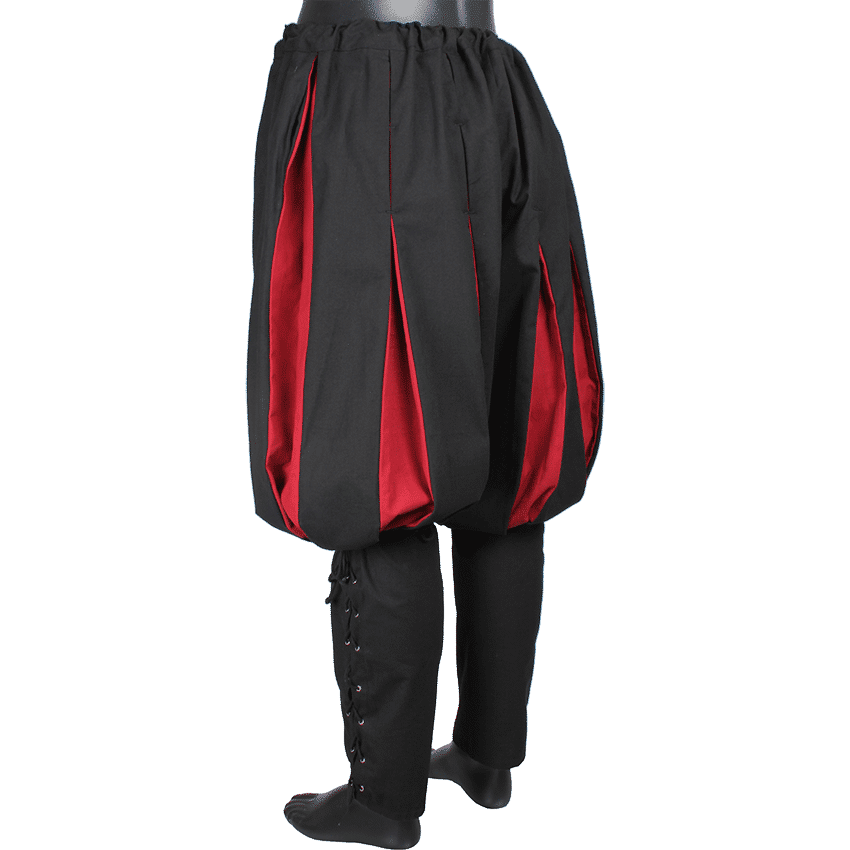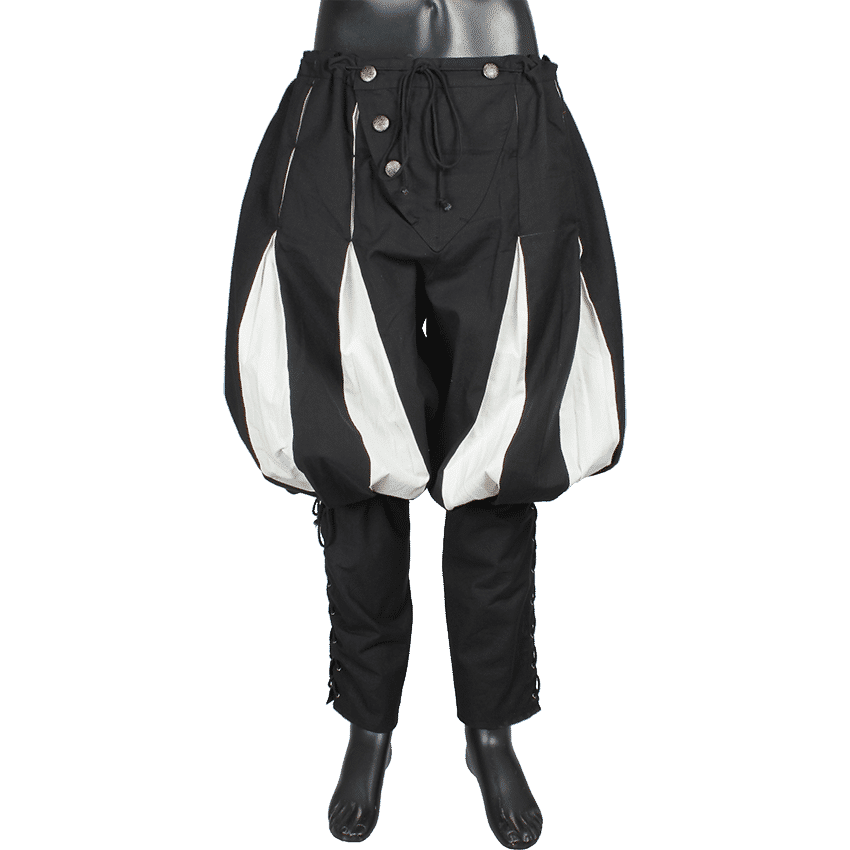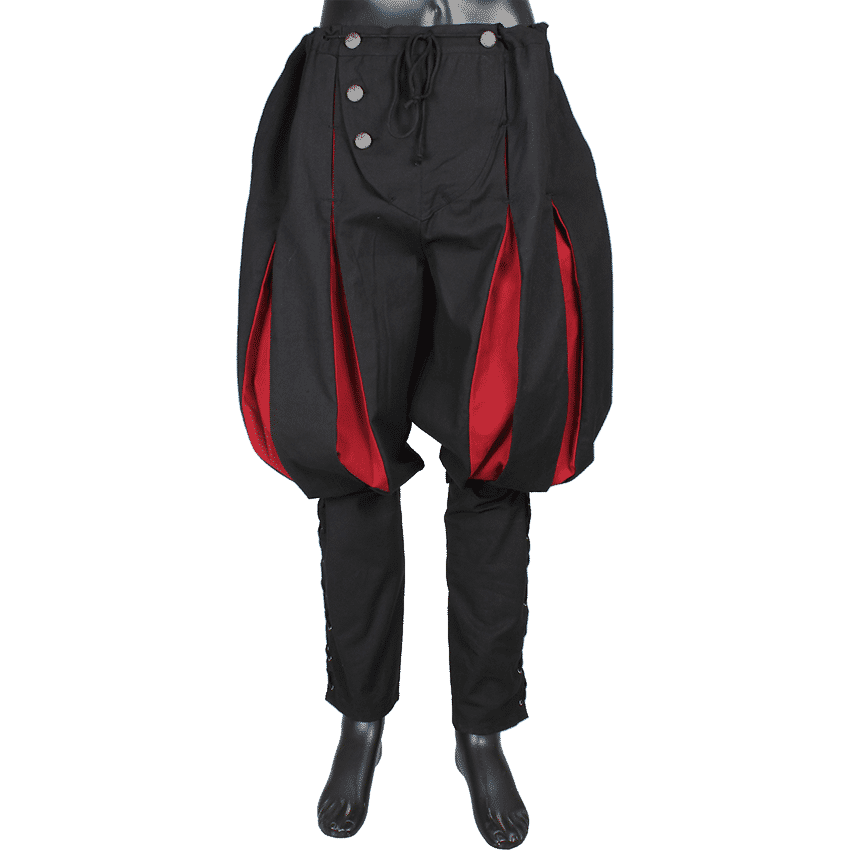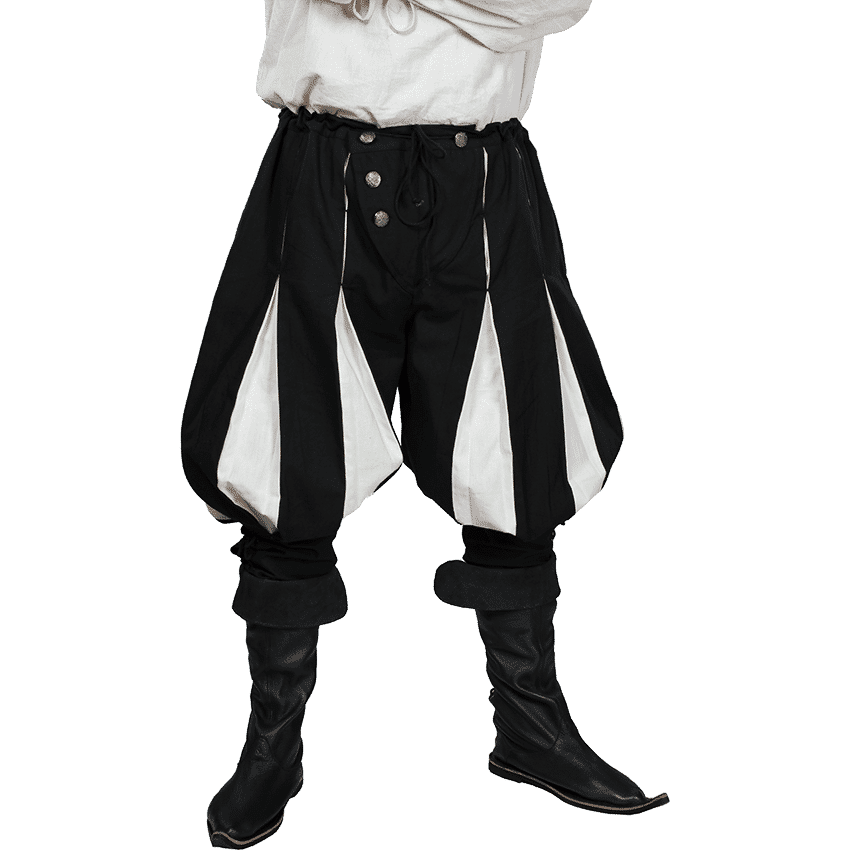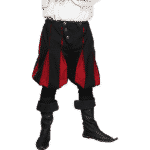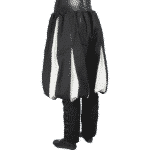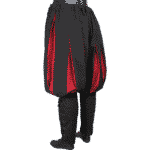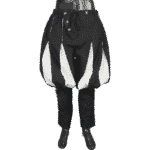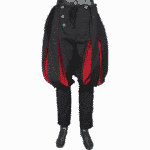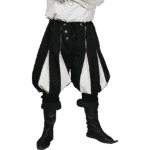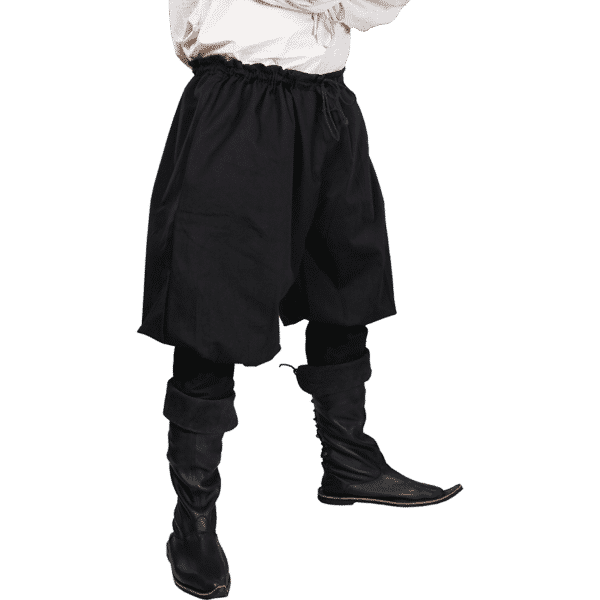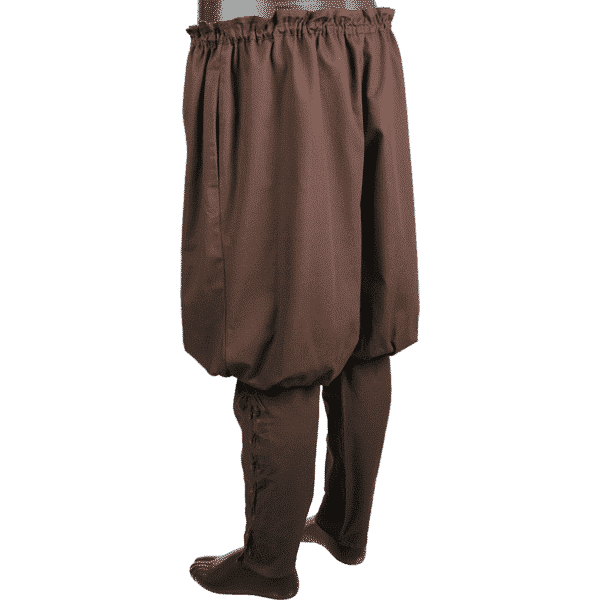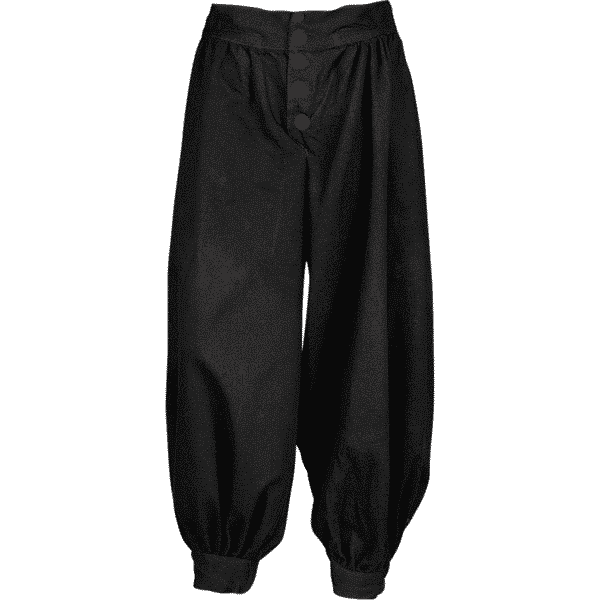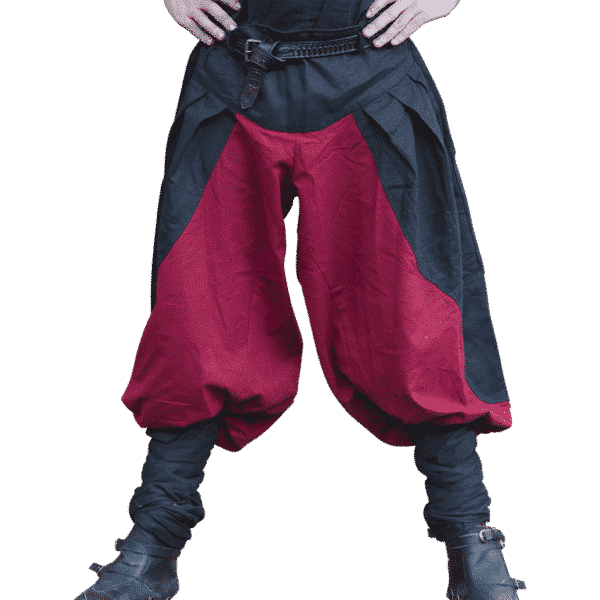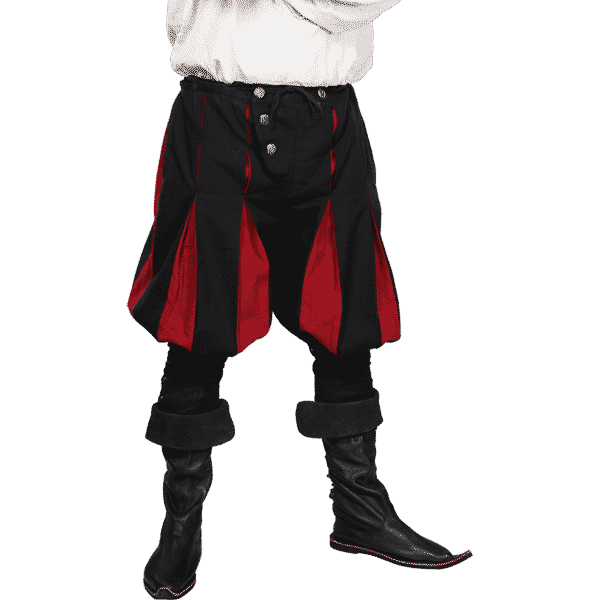Jester Pants – For Fools And Fighting Men
The tradition of the brightly coloured and mottled entertainer at court has become synonymous with the word “fool”. The modern use of this word doesn’t do justice to some of the multi-talented singer, juggler, storyteller, acrobat, troubadours of the Medieval and Renaissance eras. These were often highly-skilled, intelligent people – particularly those who managed to attach themselves to the court of a nobleman or monarch. The ill-fitting jester pants and clothing is part of an effort to mark the performer out as a hapless, larger than life caricature of humanity. A jester who hadn’t secured a position usually lived as an itinerant entertainer (some lived well, others in relative poverty) until the chance to attach themselves to a court presented itself.
Why The Colour And Cut?
The colours of a jester’s clothing are meant to be garish and unsettling – something a regular, fashion-conscious person would never wear. The baggy material and pleats were used to represent excess, again to indicate that the person wearing the garment didn’t have any sense. Props and juggling devices could also be hidden in the baggy jester trousers. For jesters, the desire to stand out from the crowd with garish clothing was obvious – they needed to attract as much attention as possible and ensure their tricks and antics had as much visual pop as possible. But there was another group of people who wore these brightly coloured, jester pants – the Landsknecht.
The Landsknechts – Flamboyant Fighting Men In Jester Trousers
After Archduke Maximilian I von Habsburg (later the Holy Roman Emperor) witnessed the defeat of the former Burgundian Empire by the outnumbered Swiss ad-hoc militia, he decided to copy their armament, tactics, and training. The Swiss had ended the Burgundian conflict with their fierce motivation, highly-drilled manoeuvres, and use of pike and shot. Maximillian inherited the Burgundian Empire in 1477 by marrying Mary of Burgundy. When France contested Maximillian’s inheritance, he created a militia from Flemish feudal lords, mercenaries and levied gentry. Using tactics adopted from the Swiss, the Flemish army defeated the French in 1479 at the Battle of Guinegate.
Doppelsöldner – True Tough Guys In Jester Pants
The use of pike and shot formations had proved useful, as did the zweihander (greatsword) wielding – Doppelsöldner (literally “double pay soldier”) front line shock troops who received extra pay for the dangerous sword work they did. After the war and dissolution of his army, Maximillian realised there was a need for a highly-trained permanent militia and began raising the first of what later would become known as Landsknechts in 1486. These first 6000 – 8000 men were sent to Brugge to be trained by Swiss instructors and became a company known as The Black Guard. The Landsknechts went on to be a formidable fighting force on the European battlefield for the better part of a century, fighting as mercenaries in many conflicts until their reputation began to drop in the 1560s. For the time that they were active, their tactical acumen in using pike and shot formations, aggression, and terrifying great-sword-wielding Doppelsöldner made them a formidable fighting force.
Legacy Of The Landsknecht
Games Workshop’s tabletop wargaming classic, Warhammer Fantasy Battles takes inspiration from a variety of historical and fantastical sources. The Landsknecht are certainly well-represented. The Empire faction takes a healthy dose of aesthetic inspiration from their flamboyant colours, armor, weapons, and tactics – jester pants included. If we were to look for a historical analogue for the Warhammer Empire, The Holy Roman Empire of the Late Medieval/Early Renaissance would be the most likely candidate. It’s no surprise that the game’s designers should choose perhaps the most iconic look from that period and work it into their fantasy.
Origins Of The Landsknecht Bright Colours
There are a few different theories surrounding the origins of the outrageous clothing of these German-speaking mercenaries. Some claim the look stems from the practice of taking feathers and strips of cloth from defeated enemies and tying them to your own clothes. Landsknecht did this to shock and intimidate their enemies and to further their terrifying reputation among people. Jester trousers were a means of appearing larger than life, and the Landsknecht wanted to achieve the same thing with their clothing. Over time this developed into the familiar style of billowing sleeves, slashed with bright colours we associate with Renaissance pike and shot men. Another theory states that at the Diet of Augsburg, Maximilian ruled that soldiers deserved a luxury in addition to food and drink and therefore could wear whatever clothing they wanted – including jester pants. This was taken to the extreme by some and then to new heights by others until the entire company was wearing baggy, brightly coloured jester trousers and codpieces with colourful feathers sticking out all over the place. It’s a strange image for us to wrap our heads around in the modern era. These were highly-trained killers dressed in outfits that wouldn’t look out of place in a burlesque show or on a clown. Weird times.
History’s Great Fools
Though there’s evidence of the existence of professional fools from the ancient Egyptian and Roman civilisations, it’s usually the Medieval and Renaissance examples (and their jester trousers) we picture upon hearing the word “fool”. Though many of these court entertainers blended into the background of history, some have made enough of an impression that something about their lives is still known.
Will Sommers
Will Sommers was first brought to the court of King Henry VIII by a wool merchant named Richard Fermor. The king, impressed by the young man’s quick wit and sense of humour, asked Somers to stay. He remained by the king’s side for the rest of his life and was said to be the only one capable of raising Henry’s spirits later in life when he was plagued by a painful leg. Many of the caricatures of the boundary-stepping court jester come from the antics of Sommers. He was, to some extent, not beholden to the same social norms when it came to discussing nobility. There may have been an understanding among professional jesters that anything that brought laughs from your patron was positive. Will Sommers did overstep the mark on several occasions, with the King threatening to kill him with his own hands after Sommers accepted a dare to call Queen Anne “a ribald” and Princess Elizabeth “a bastard”. Sommers actually remained at court after King Henry’s death and his last public event was the coronation of Elizabeth I.
Sir Jeffery Hudson
Jeffery Hudson was a dwarf and court jester to English Queen, Henrietta Maria in the 17th century. He was known, among other things as “Lord Minimus” and famed for his tiny but remarkably well-proportioned body. Hudson was, by some accounts, no fool (he was a court fool but not a stupid one). He was educated in the Queen’s court and was known for his razor-sharp wit. Hudson fought on the Queen’s side during the civil war and on resuming courtly life, decided he would suffer no more insults and cheap jokes (we like this guy and he reminds us of Tyrion Lannister). Brother of William Crofts (a powerful English baron) didn’t respect Hudson’s wish to be treated with dignity and ran his mouth in court, mocking the dwarf for cheap laughs. Hudson challenged him to a duel. Crofts laughed in his face and returned for the duel carrying a squirt instead of a gun. Jeffery Hudson shot him through the forehead, killing him instantly. He was initially sentenced to death but when the Queen intervened on his behalf he was sent back to England instead. This wasn’t the end of Hudson’s tale, however. Within months he was captured by Barbary pirates and spent the next 25 years in North Africa under horrific conditions of labour and the worst form of abuse. He was ransomed by English missionaries and on returning to England travelled to London, perhaps to seek a royal pension for his years of service to the crown. Sadly, he arrived at a time of virulent anti-Catholic sentiment and was imprisoned for a further two years for the sole crime of being a Catholic. He was buried in a Catholic pauper’s grave two years later.
Not quite what you’re after? Then you should check out these pants!
Jester Pants Key Features:
- Landsknecht-inspired
- Also suitable as jester trousers
- Loose-waisted jester pants with baggy, upper legs and fitted lower legs
- Slashed with colour and pleated
Materials:
- Light Canvas
- Soft Cotton Lined
- Heavy Cotton Cord
Sizing:
- S: up to a 32 Inch Waist, 11 Inch Calf, 32.5 Inches long
- M: up to a 39 Inch Waist, 11.8 Inch Calf. 36.25 Inches long
- L: up to a 40 Inch Waist, 12.6 Inch Calf, 40.25 Inches long
- XL: up to a 44 Inch Waist, 13.4 Inch Calf. 43.25 Inches long
- XXL: up to a 48 Inch Waist, 14.2 Inch Calf, 47.25 Inches long

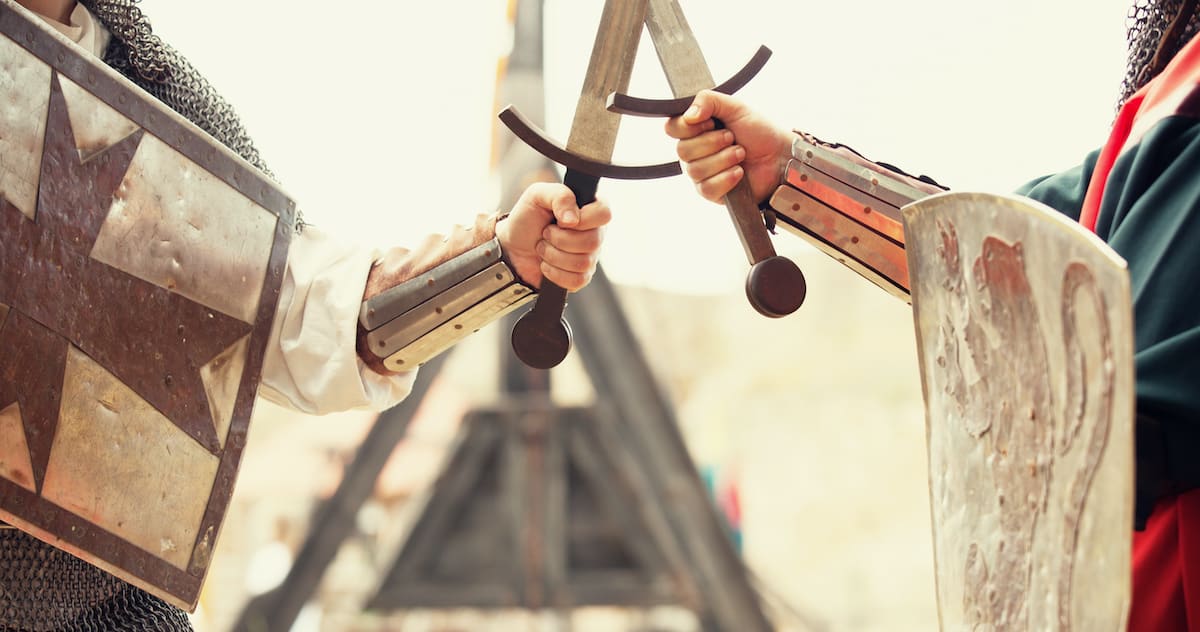 Historical Swords
Historical Swords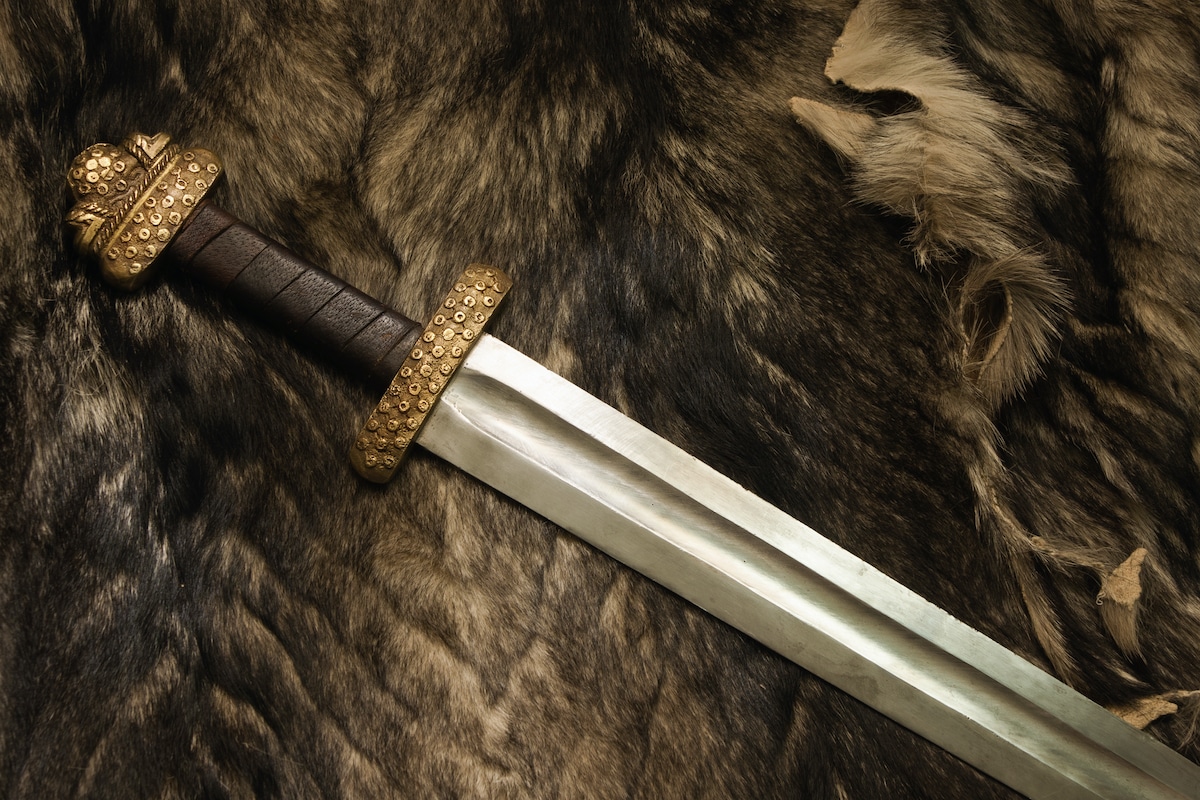 Norse & Viking Swords
Norse & Viking Swords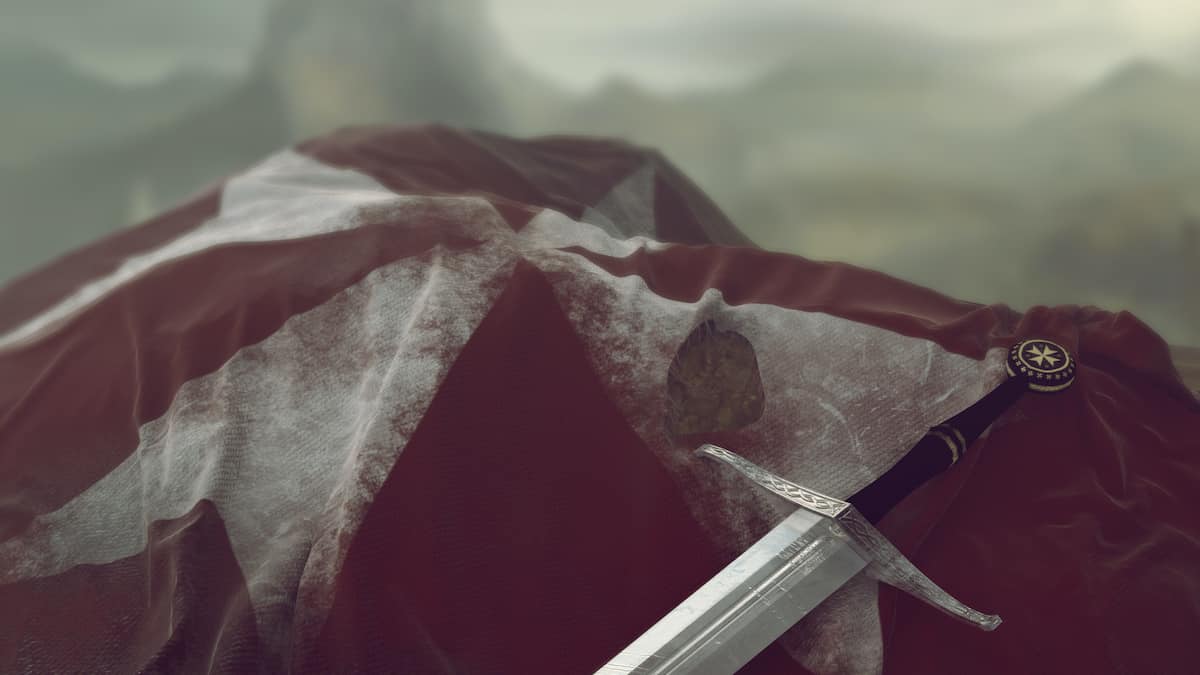 Templar Swords
Templar Swords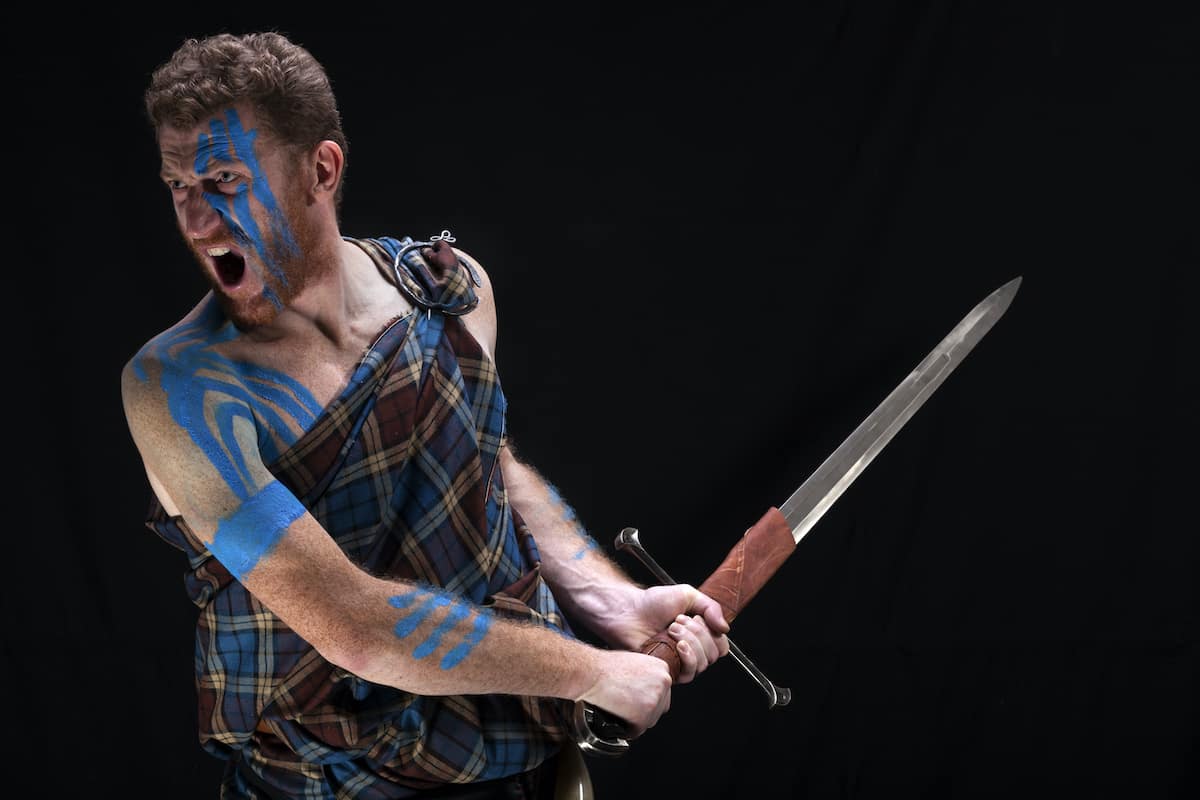 Claymore Swords
Claymore Swords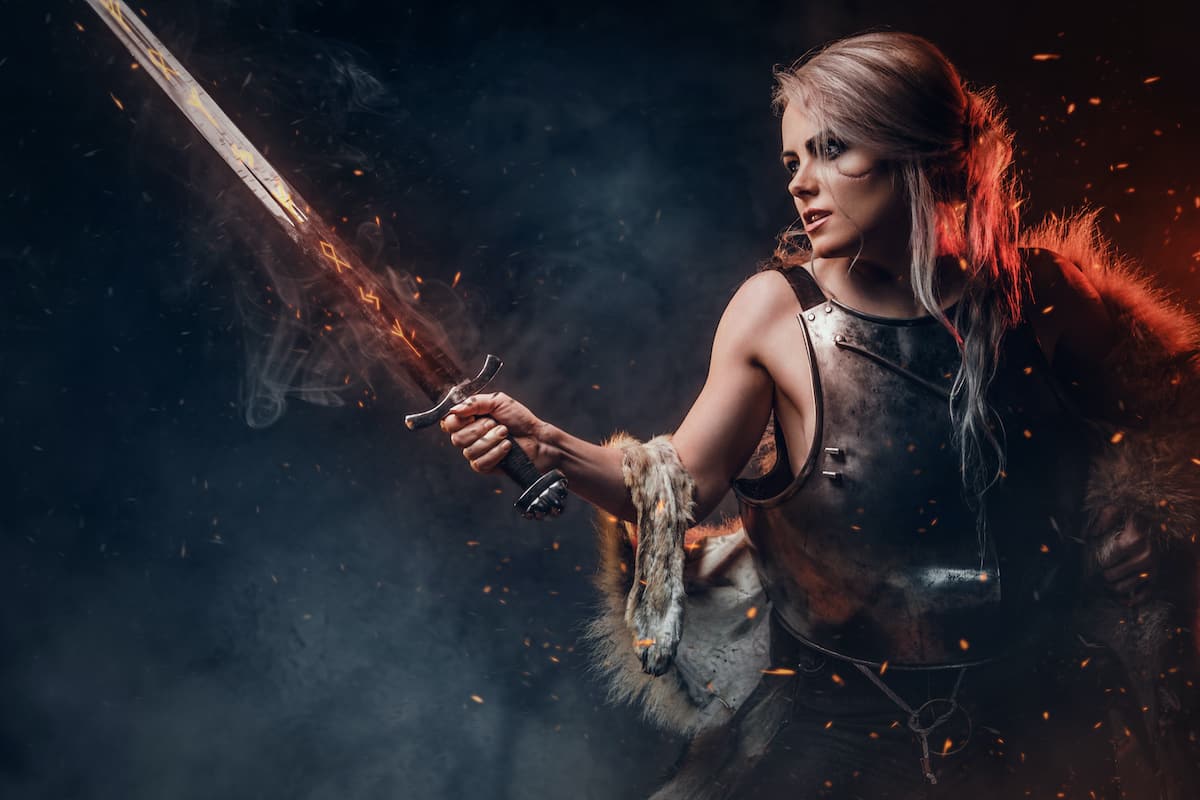 Fantasy Swords
Fantasy Swords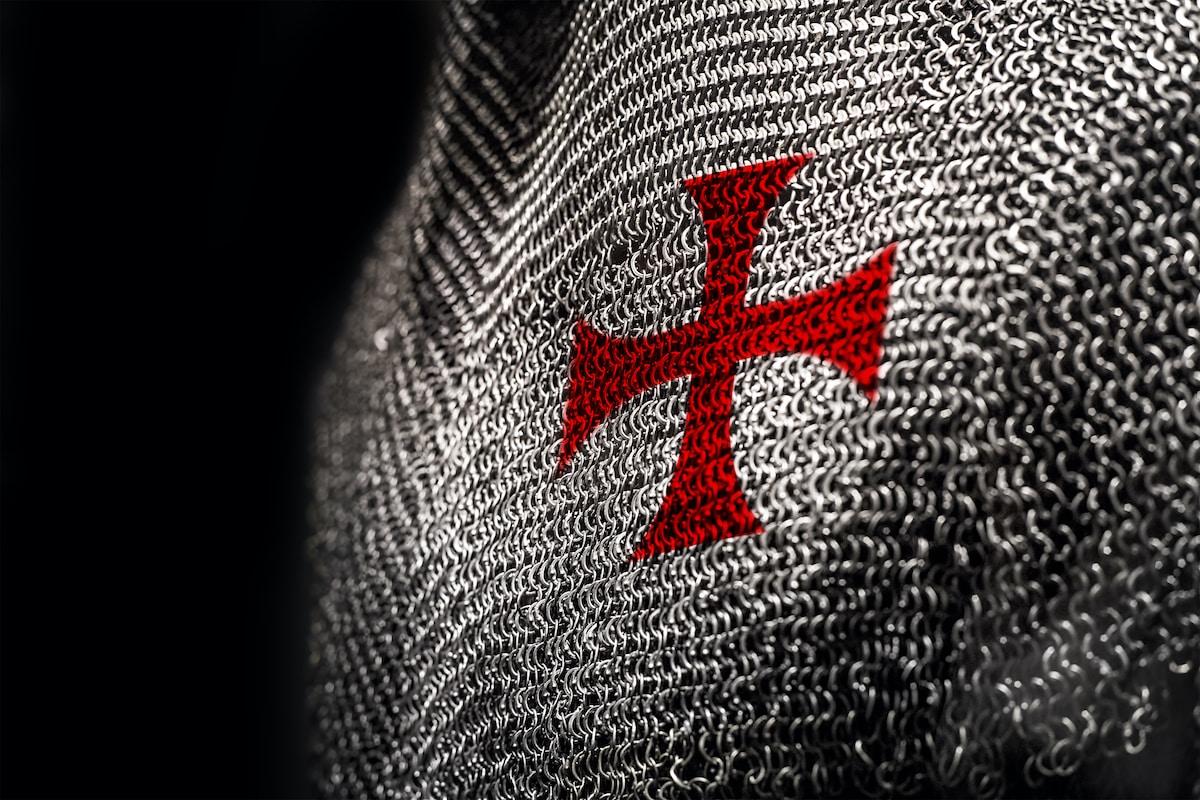 Chainmail
Chainmail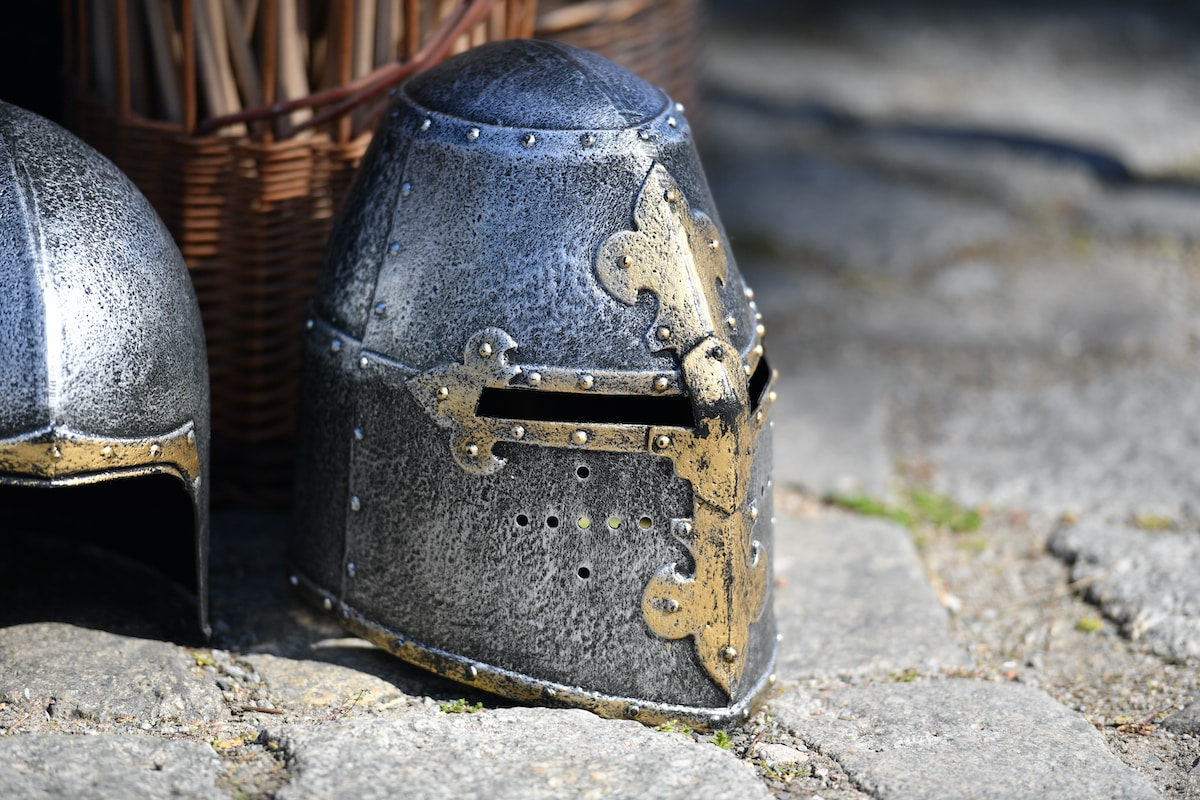 Helmets
Helmets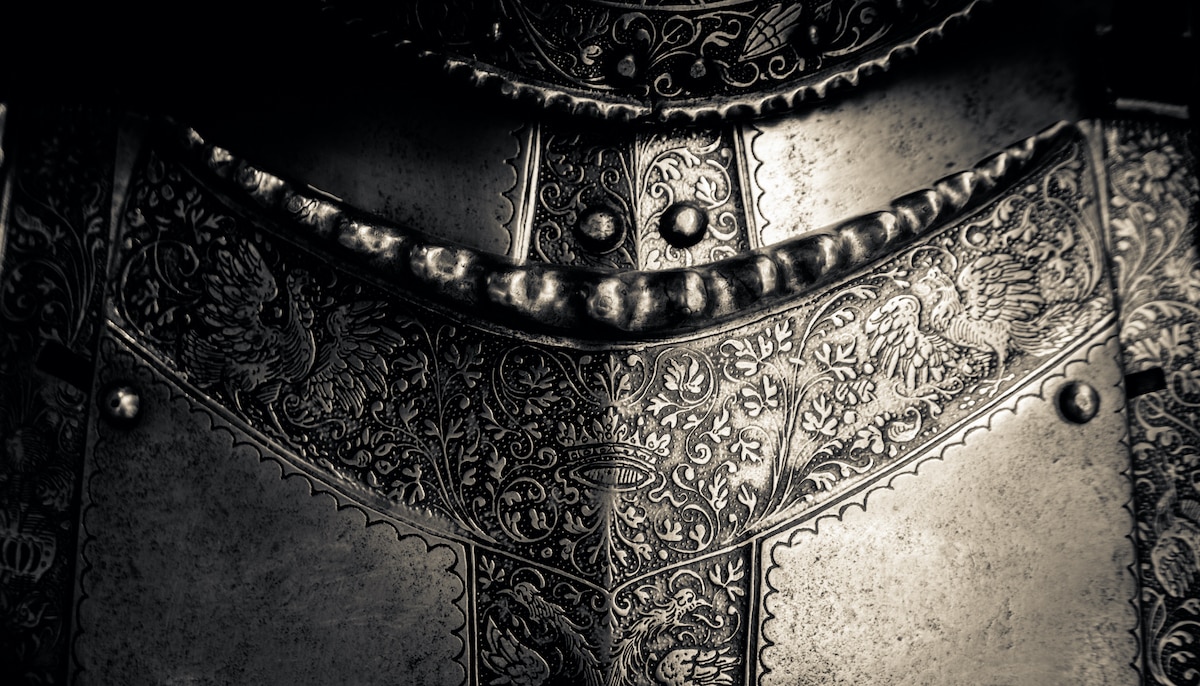 Torso Armor
Torso Armor Bracers and Arm Protection
Bracers and Arm Protection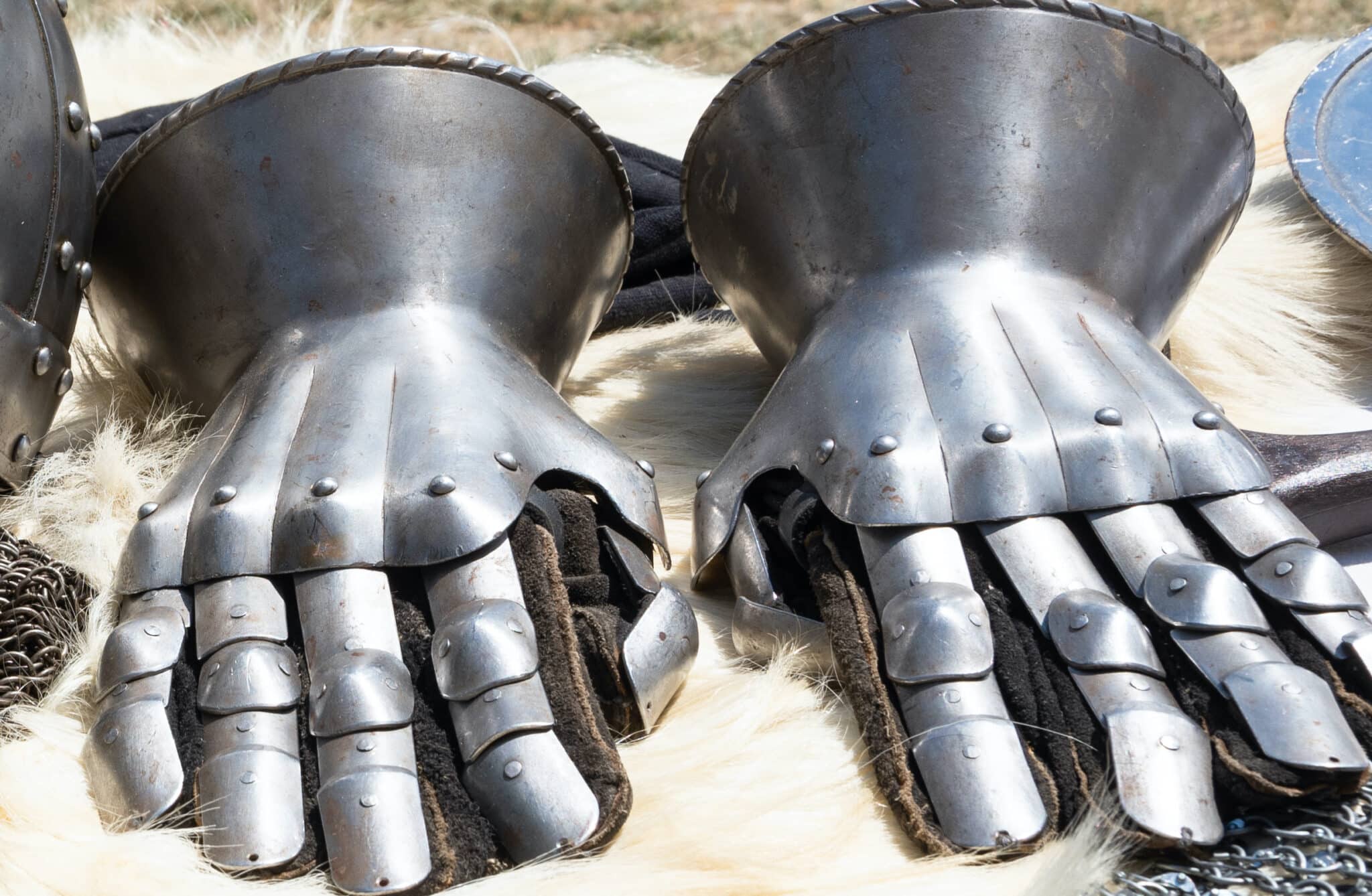 Gauntlets
Gauntlets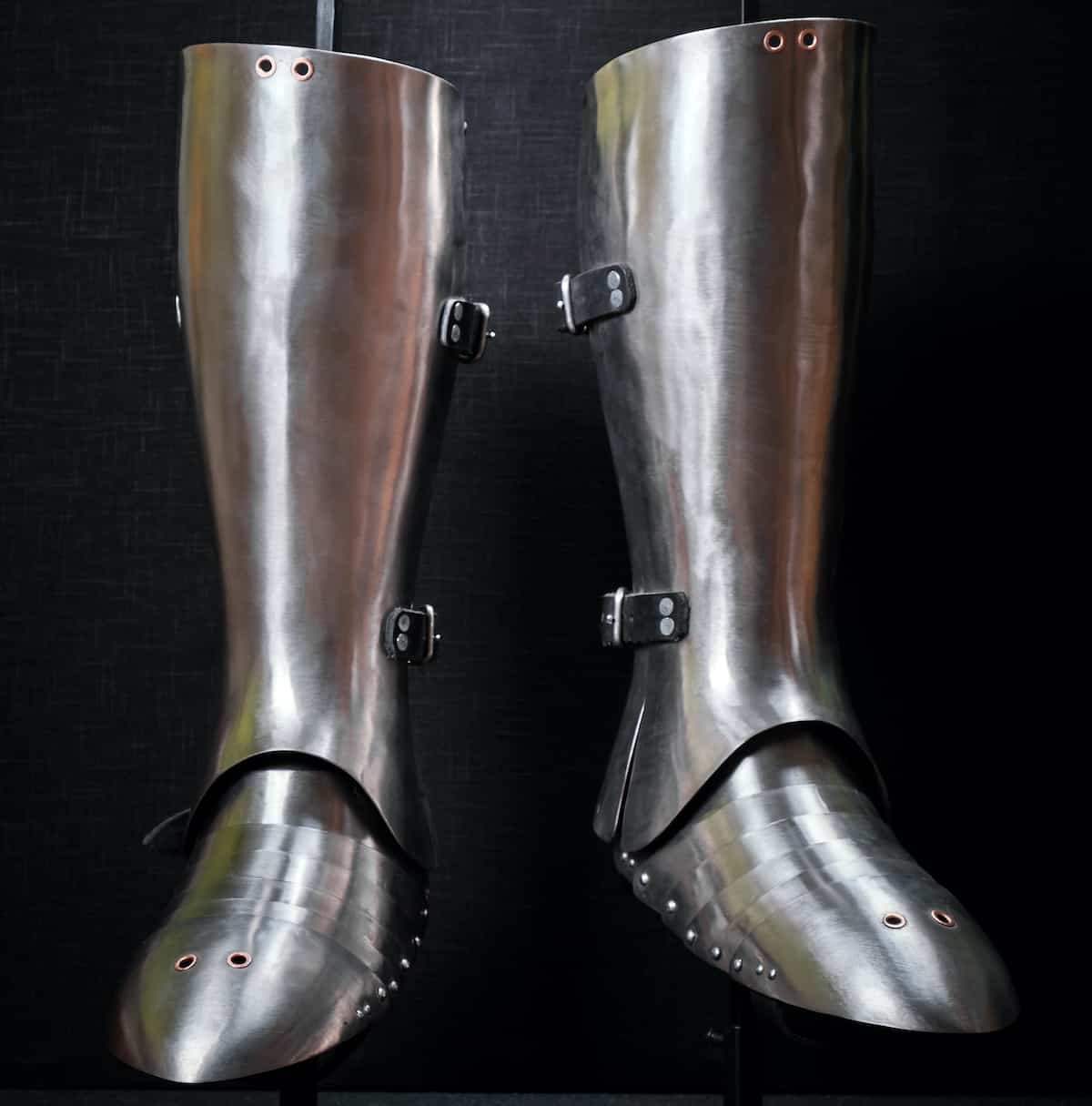 Leg Armor
Leg Armor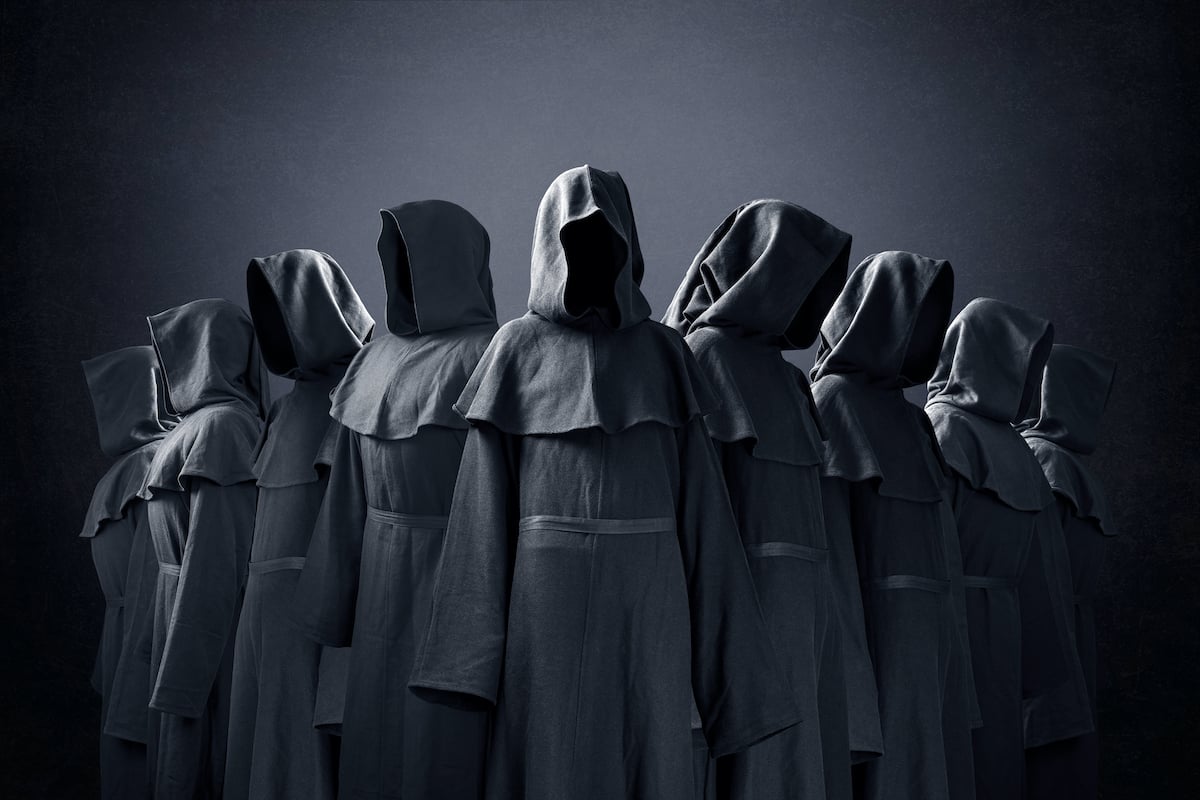 Cloaks
Cloaks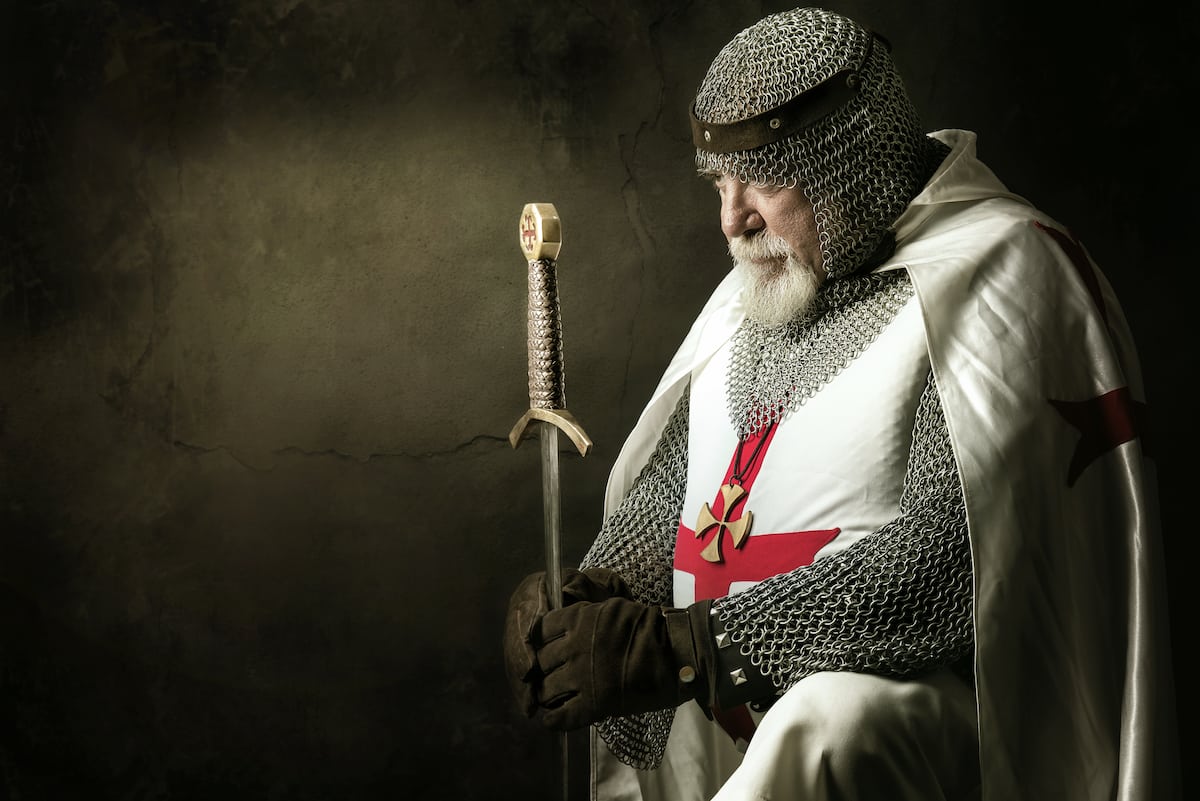 Tabards
Tabards Shirts
Shirts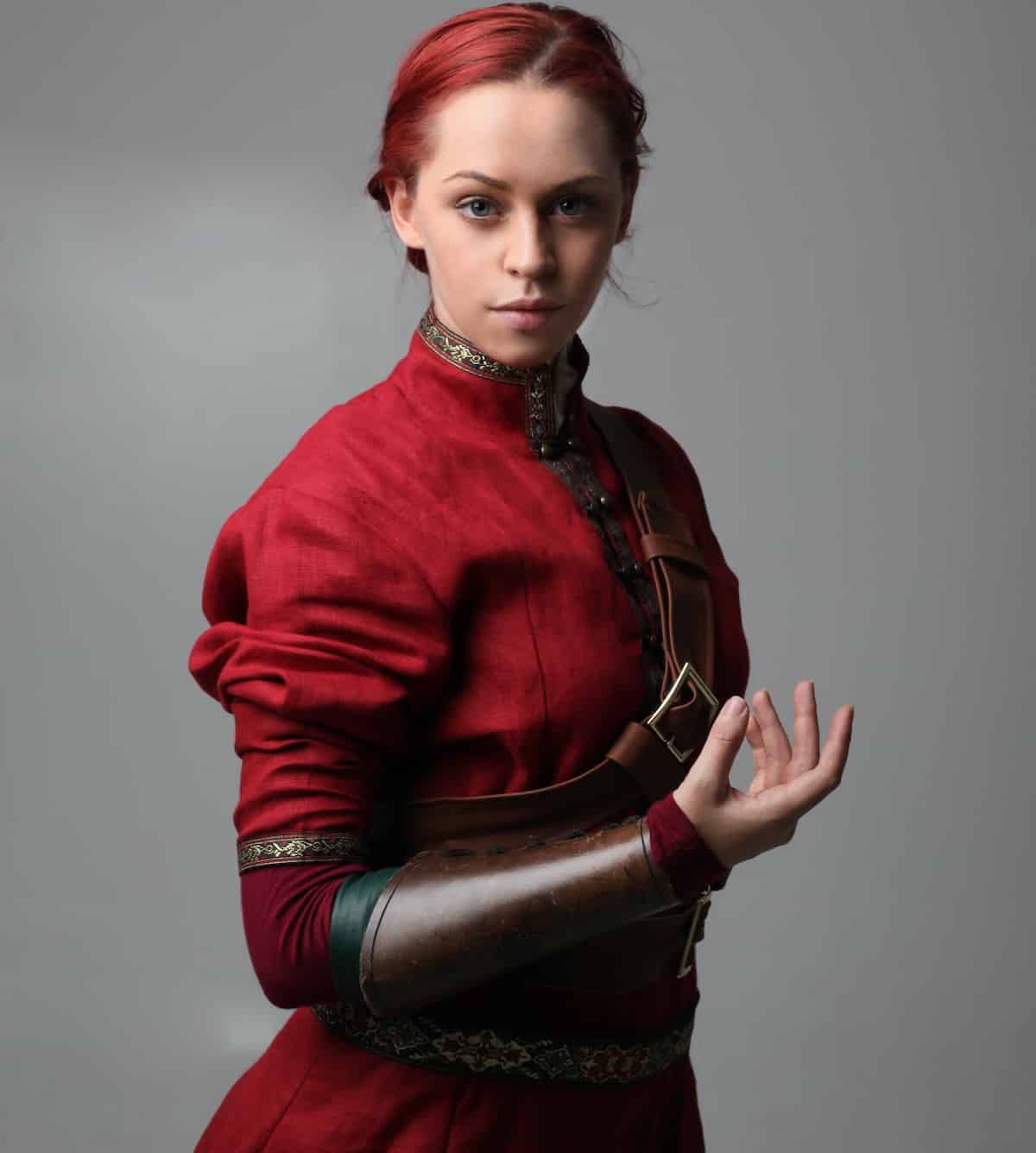 Tunics
Tunics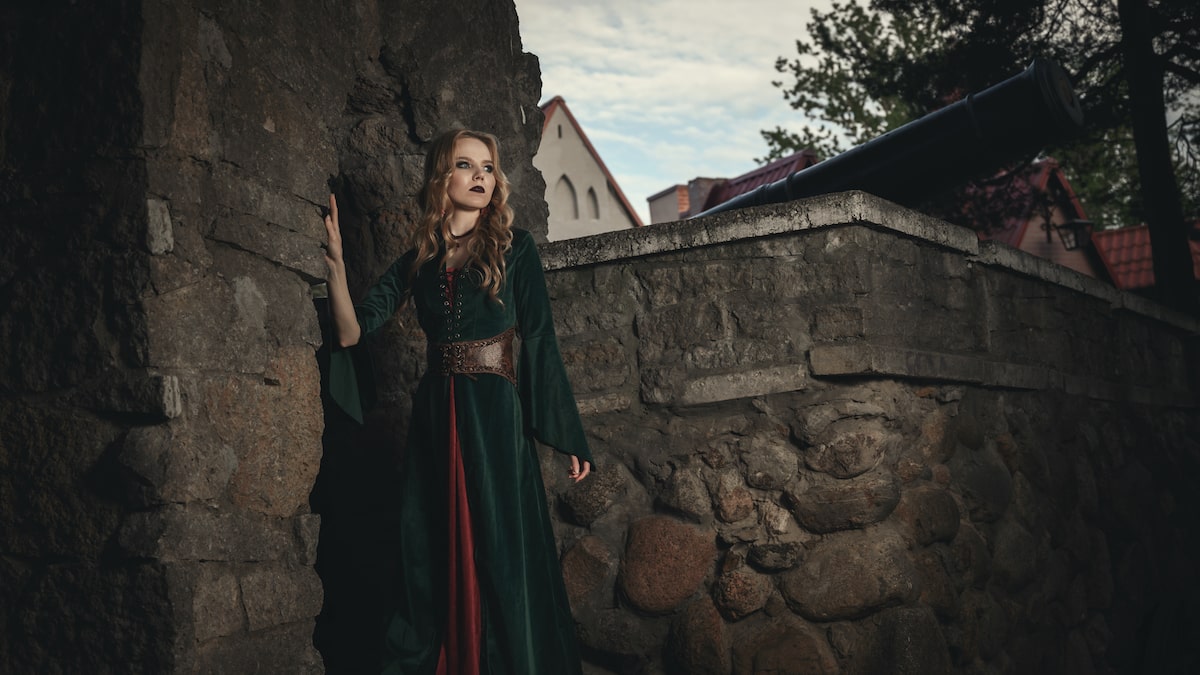 Dresses
Dresses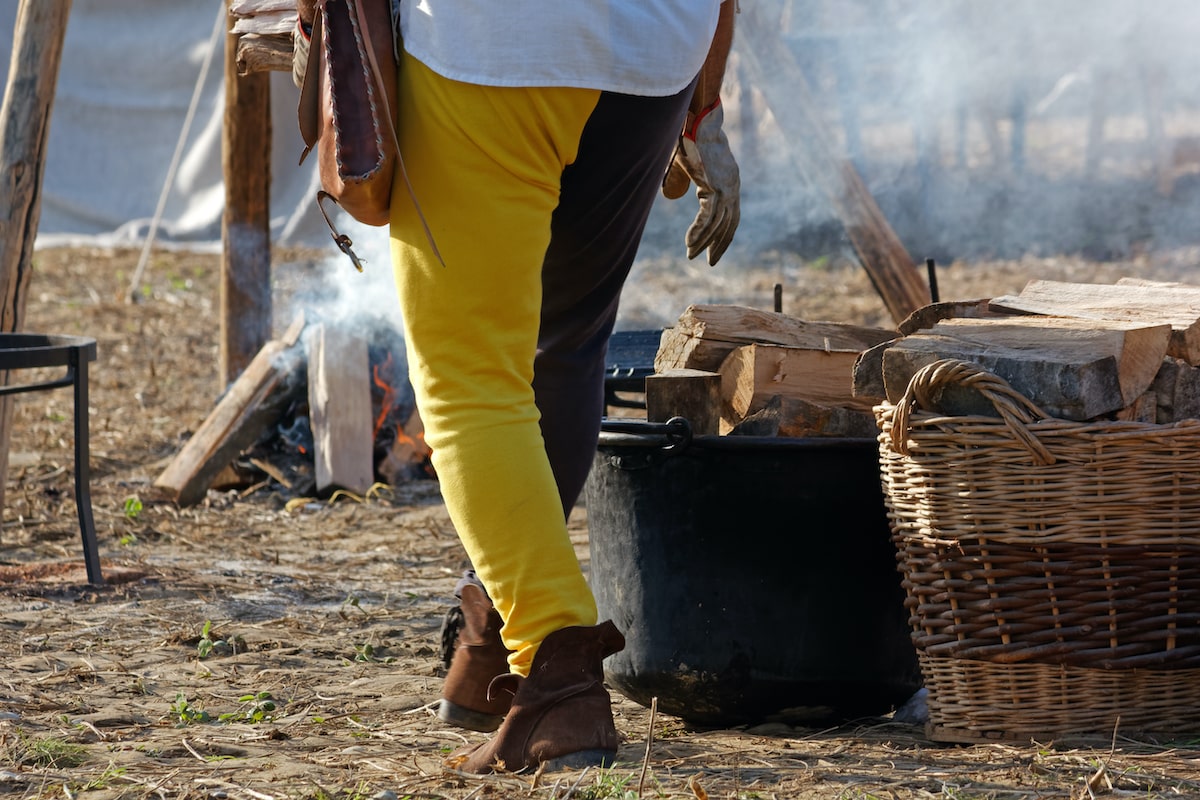 Pants
Pants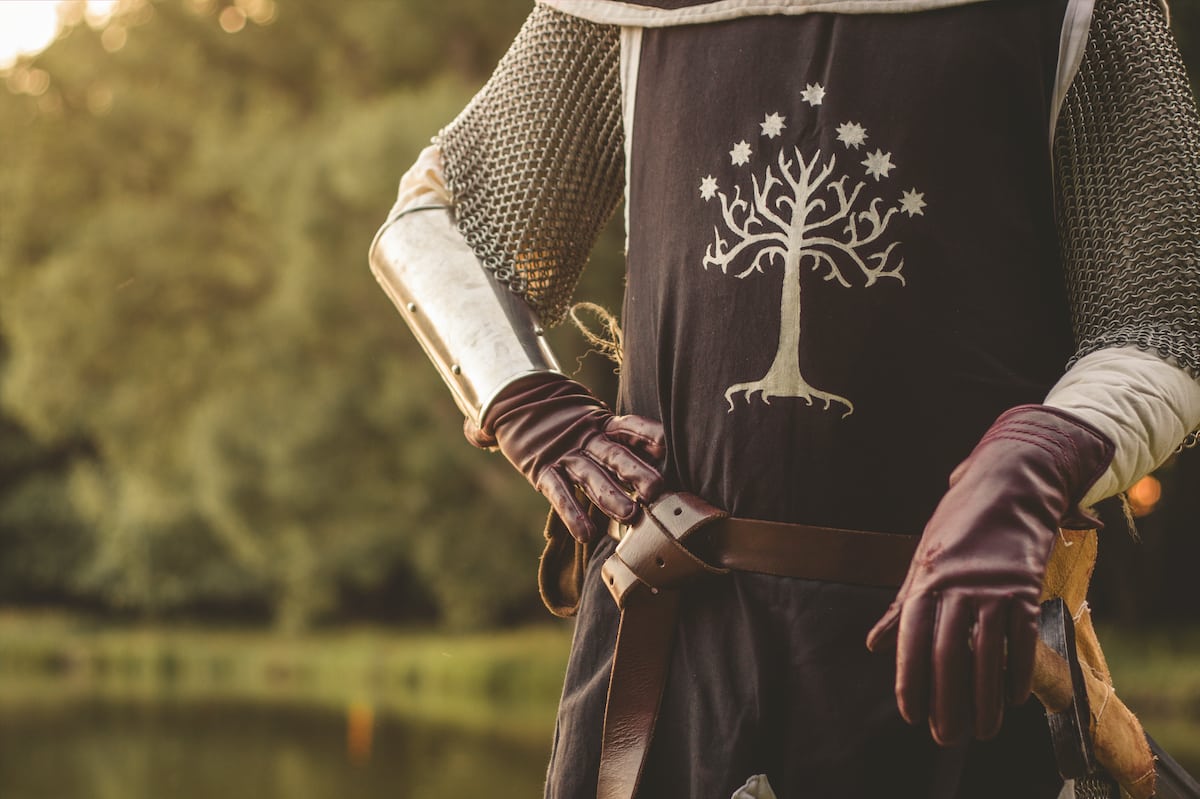 Gloves
Gloves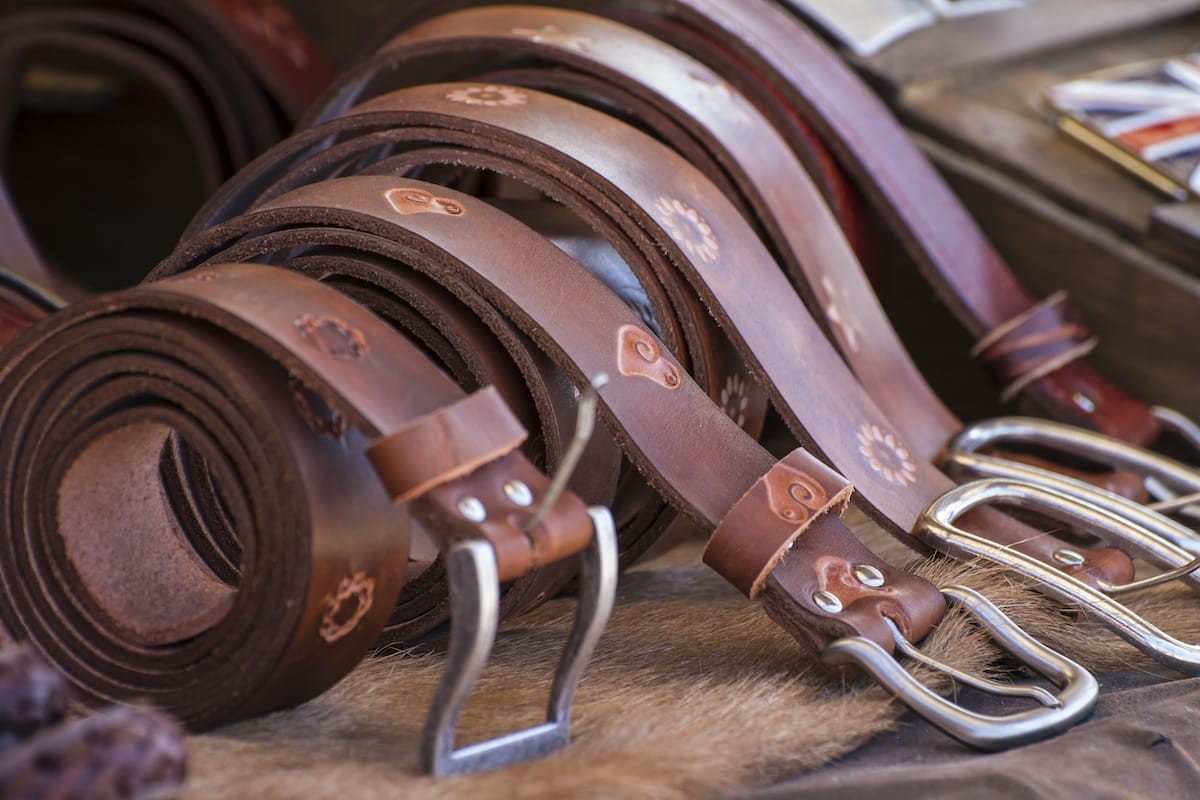 Belts
Belts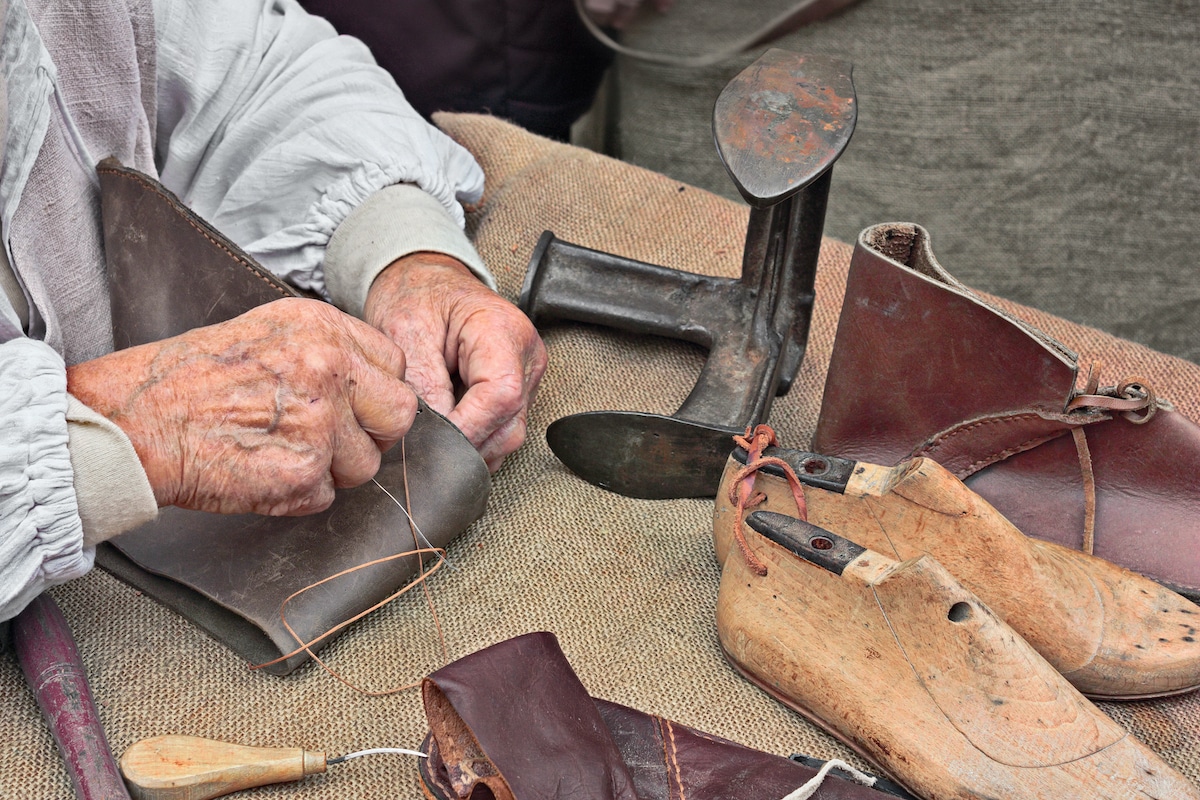 Shoes
Shoes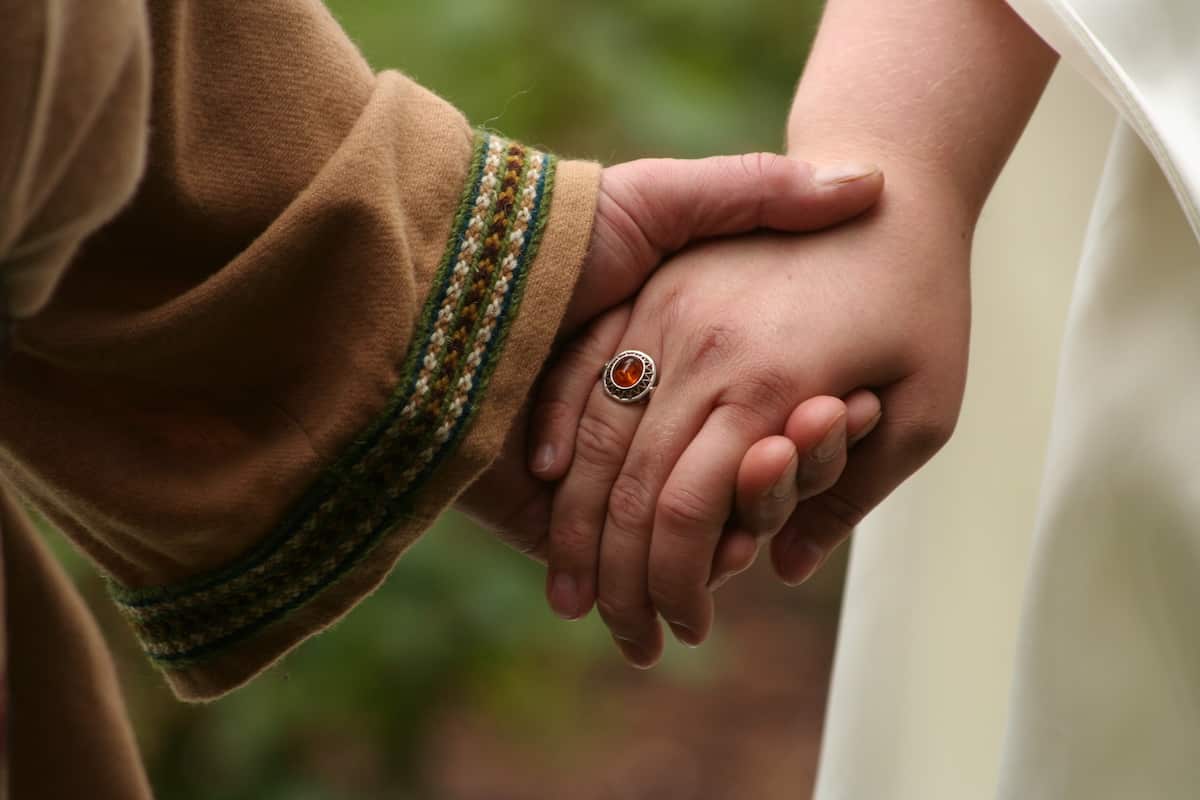 Rings
Rings Necklaces & Pendants
Necklaces & Pendants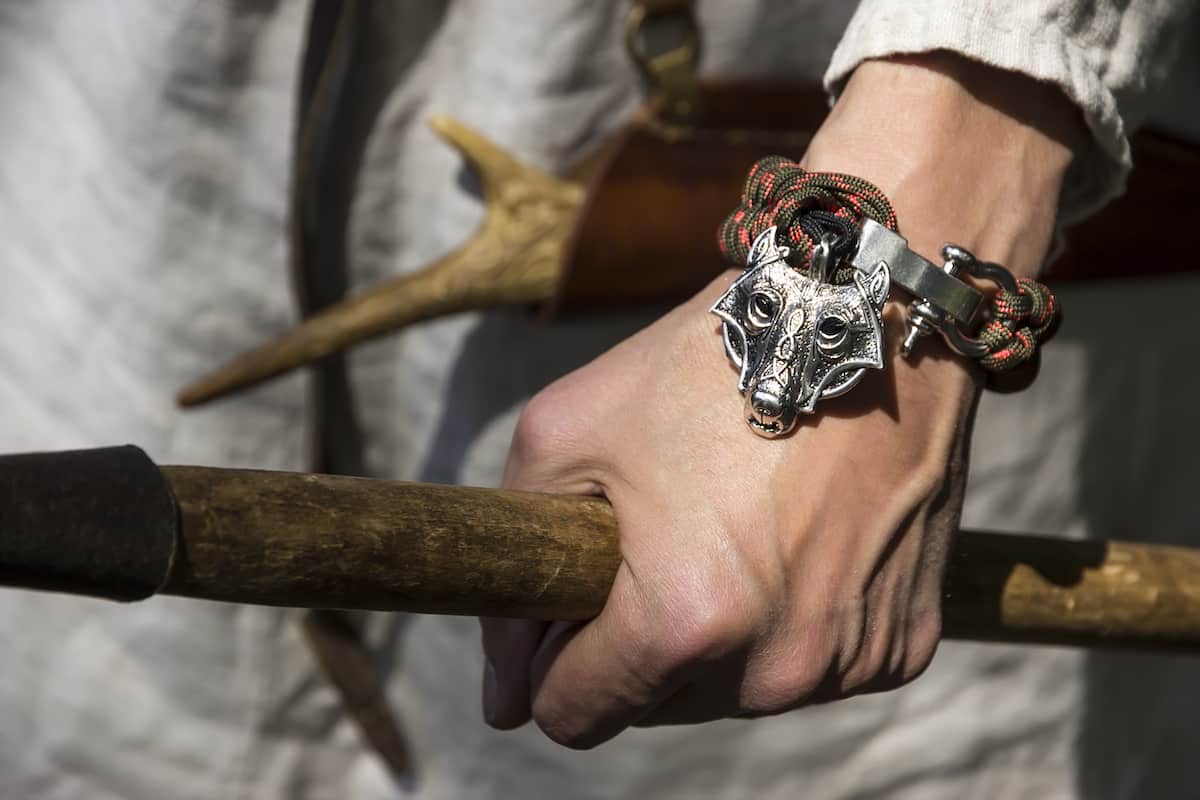 Bracelets
Bracelets